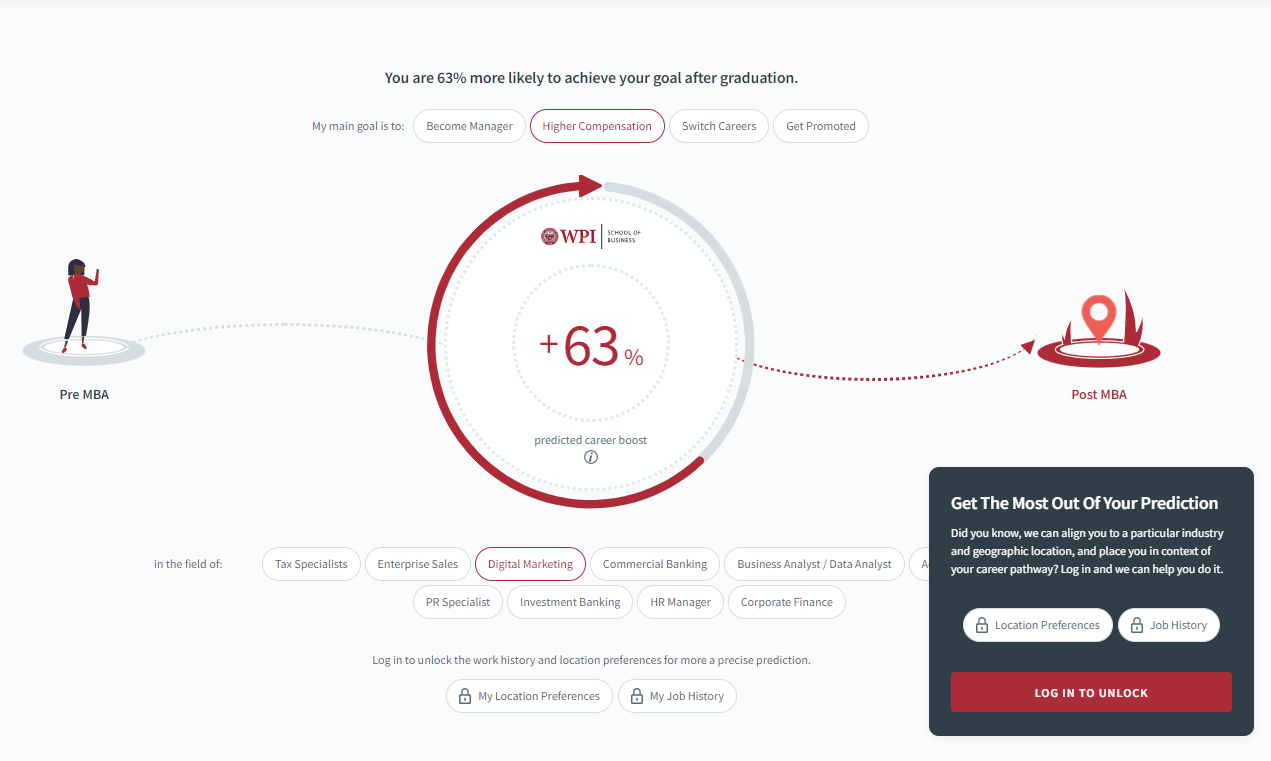Using a Return on Investment Tool to Make Better Grad School Decisions
The MBA program at Worcester Polytechnic Institute’s new return on investment tool is designed to help prospective students make better decisions about graduate school spending.

The MBA program at the Business School at The Worcester Polytechnic Institute (WPI) has launched a new digital tool that will let prospective students analyze their potential return on investment (ROI).
Far more than merely a recruitment method, the return on investment tool is a way of advocating for more transparency and accountability in higher education, says Reverend Dr. Debora Jackson.
“I think we all have a responsibility to do this,” she says. “This feels like an ethical response. There are a lot of students who go to school and take on potentially great amounts of debt, and then don't see that return.”
The average graduate student incurs $70,000 in student loans to pay for their advanced degree, according to the National Center for Education Statistics.
“We have to be better stewards of these resources on behalf of our prospective students. I think that that's our responsibility in higher education,” Jackson says.
Return on Investment Tool at The Worcester Polytechnic Institute
Giving prospective students access to better data to make smarter decisions is in keeping with the lessons taught at WPI’s STEM-focused MBA program that includes concentrations in fields such as analytics, finance, and supply chain operations.
“We see ourselves as using technology to make business education distinctive,” Jackson says. “We're looking at business intelligence and analytics or supply chain or IT or innovation and entrepreneurship, product management.”
Tools and ideas to transform education. Sign up below.
For the return on investment tool, WPI partnered with Seattle-based data services firm AstrumU to give prospective MBA students access to customized predictions for their career placement, promotion, and earning potential. These predictions are all based on the real-world career outcomes of WPI graduates.
Out of the gate, the cost for an MBA is about $45,000 and the median earnings of a graduate is $119,000, but potential students can customize it to their situations and fields. “You could use this tool and say more specifically where you want to study, where you want to go, where you want to live, the kind of job that you want to have, and get that customized prediction,” Jackson says.

How Students and Educators Can Start Thinking About ROI
When choosing a graduate school or graduate school, students and the educators who provide guidance to them should think about ROI and the career and earnings goals they have in mind. “Do your homework,” Jackson advises. Look for schools that provide statistics on post-graduation success and are transparent and open with other data. Not every program is the right fit for every student but it’s better for students and institutions in the long run if students are able to make more informed decisions.
Jackson hopes that by placing an emphasis on ROI, WPI can help inspire this type of transparency to become more commonplace. She adds that it’s the responsibility of higher ed leaders to make sure that happens. “We're taking a leadership position in that responsibility,” she says.
Erik Ofgang is a Tech & Learning contributor. A journalist, author and educator, his work has appeared in The New York Times, the Washington Post, the Smithsonian, The Atlantic, and Associated Press. He currently teaches at Western Connecticut State University’s MFA program. While a staff writer at Connecticut Magazine he won a Society of Professional Journalism Award for his education reporting. He is interested in how humans learn and how technology can make that more effective.

